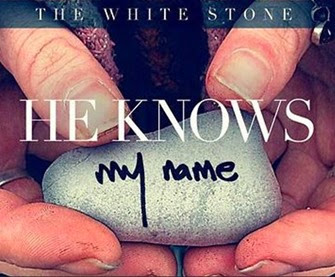 In Exodus chapter 28, we read where the Lord commanded that Moses’ brother Aaron, along with his four sons, be set aside from the children of Israel as holy priests (vv. 1-2); and the Lord commissioned artisans to fashion sacred garments for them, containing a breastplate, an ephod, a robe, a tunic, a turban, and a sash (vv. 3-8). We then read the following words of instructions found in Exodus 28:9-12:
In Exodus chapter 28, we read where the Lord commanded that Moses’ brother Aaron, along with his four sons, be set aside from the children of Israel as holy priests (vv. 1-2); and the Lord commissioned artisans to fashion sacred garments for them, containing a breastplate, an ephod, a robe, a tunic, a turban, and a sash (vv. 3-8). We then read the following words of instructions found in Exodus 28:9-12:
Then you shall take two onyx stones and engrave on them the names of the sons of Israel: six of their names on one stone, and six names on the other stone, in order of their birth. With the work of an engraver in stone, like the engravings of a signet, you shall engrave the two stones with the names of the sons of Israel.
You shall set them in settings of gold. And you shall put the two stones on the shoulders of the ephod as memorial stones for the sons of Israel. So Aaron shall bear their names before the Lord on his two shoulders as a memorial.
We encounter a word here that some of us probably don’t recognize, which is the word “ephod.” Easton’s Bible Dictionary defines the word ephod as “a sacred vestment worn originally by the high priest, [and] afterwards by the ordinary priest . . . It was made of fine linen, and consisted of two pieces, which hung from the neck, and covered both the back and front, above the tunic and outer garment . . . The two pieces were joined together over the shoulders by clasps or buckles of gold or precious stones.”
These verses tell us that on the shoulder straps of the ephod, probably on the buckles, there would be two onyx memorial stones set in place (size unknown), on which would be inscribed by an engraver the names of the twelve tribes of Israel; six names on each stone, in order of their birth (vv. 9-11); and then we’re told about the purpose of these two stones: They would be worn by Aaron as he entered the holy of holies; and thereby, the names of the twelve tribes of Israel would be seen by the Lord (v. 12).
The reason for displaying these two onyx stones before God in His holy tabernacle is so they would serve as “memorial stones” to the Lord (v. 12), always reminding Him of His covenant with the tribes of Israel; for it was by God’s covenant that the Lord extended His mercy and favor toward Israel.
On Memorial Day we recognize the names of those who have died in the armed services, and we also recall our loved ones who have died of some other cause; but the main thing is that we remember them. Being remembered by the people we love is something we all hope will happen when we die; but the most important thing is to be remembered before God when we stand at the judgment.
In Revelation 2:17, Jesus declared, “To him who overcomes I will give some of the hidden manna to eat. And I will give him a white stone, and on the stone a new name written which no one knows except him who receives it.” To him who overcomes; or rather, to him who has received Jesus Christ as Savior and Lord; he will receive a new name inscribed on stone that will serve as a memorial before God; reminding the Lord of His mercy and favor extended toward us.
The new name depicts a new spiritual beginning, and the white stone portrays being cleansed from our sin. Therefore, when we pass away and stand before God’s throne, He won’t recall our former sinful life; but He will instead remember His covenant; the new covenant made in Christ. The writer of Hebrews said, “This is the covenant that I will make with them after those days, says the Lord: I will put My laws into their hearts, and in their minds I will write them” and “their sins and their lawless deeds I will remember no more” (Hebrews 10:16-17).
As we remember our loved ones, let’s be certain that we’ll see them again. If we have a relationship with God through His Son, Jesus Christ, then He will remember our name when we stand before His throne; and He will remember His covenant and mercy, and declare, “Well done, good and faithful servant . . . enter into the joy of your Lord” (Matthew 25:21).
